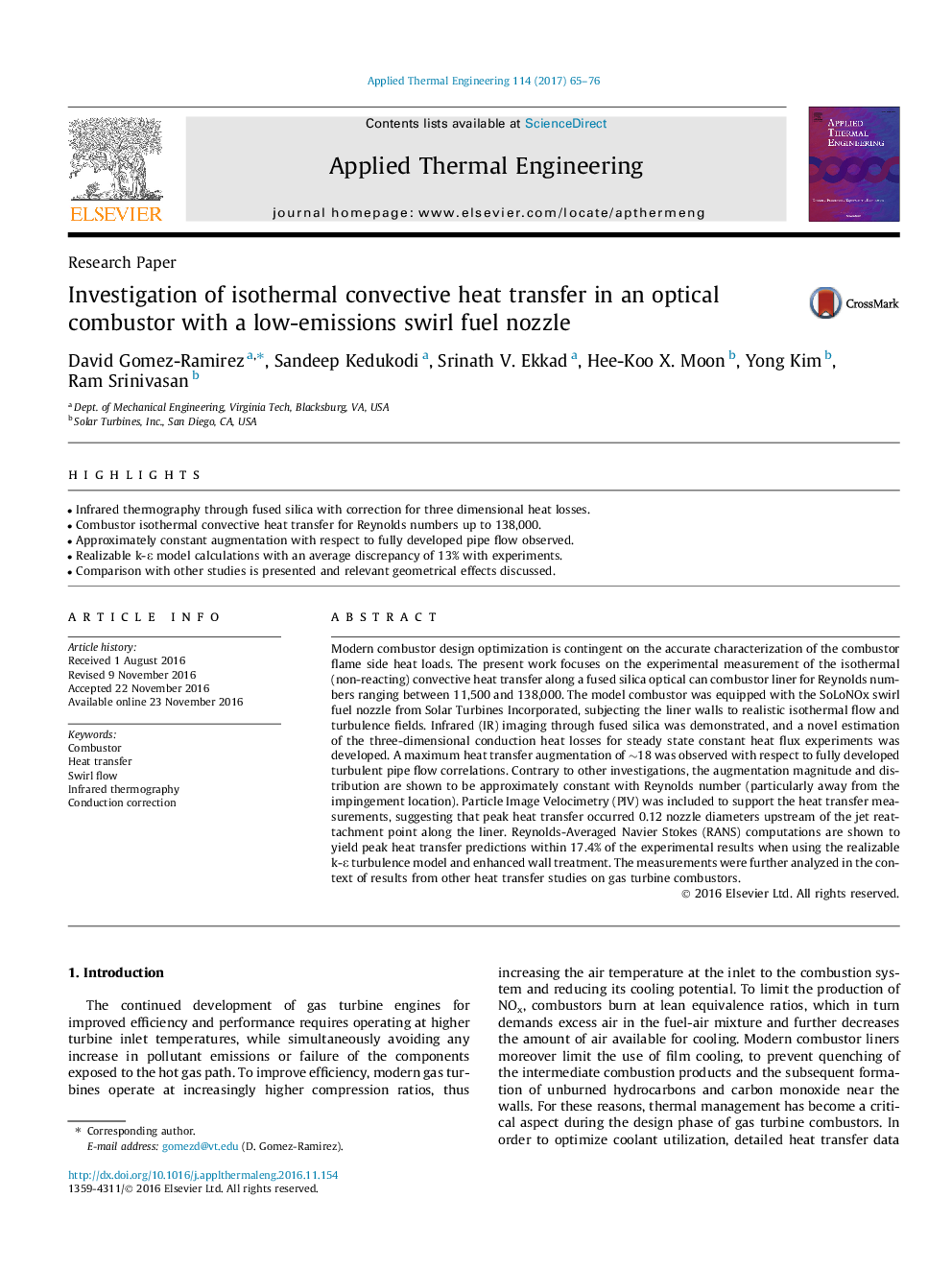| Article ID | Journal | Published Year | Pages | File Type |
|---|---|---|---|---|
| 4991936 | Applied Thermal Engineering | 2017 | 12 Pages |
Abstract
Modern combustor design optimization is contingent on the accurate characterization of the combustor flame side heat loads. The present work focuses on the experimental measurement of the isothermal (non-reacting) convective heat transfer along a fused silica optical can combustor liner for Reynolds numbers ranging between 11,500 and 138,000. The model combustor was equipped with the SoLoNOx swirl fuel nozzle from Solar Turbines Incorporated, subjecting the liner walls to realistic isothermal flow and turbulence fields. Infrared (IR) imaging through fused silica was demonstrated, and a novel estimation of the three-dimensional conduction heat losses for steady state constant heat flux experiments was developed. A maximum heat transfer augmentation of â¼18 was observed with respect to fully developed turbulent pipe flow correlations. Contrary to other investigations, the augmentation magnitude and distribution are shown to be approximately constant with Reynolds number (particularly away from the impingement location). Particle Image Velocimetry (PIV) was included to support the heat transfer measurements, suggesting that peak heat transfer occurred 0.12 nozzle diameters upstream of the jet reattachment point along the liner. Reynolds-Averaged Navier Stokes (RANS) computations are shown to yield peak heat transfer predictions within 17.4% of the experimental results when using the realizable k-ε turbulence model and enhanced wall treatment. The measurements were further analyzed in the context of results from other heat transfer studies on gas turbine combustors.
Related Topics
Physical Sciences and Engineering
Chemical Engineering
Fluid Flow and Transfer Processes
Authors
David Gomez-Ramirez, Sandeep Kedukodi, Srinath V. Ekkad, Hee-Koo X. Moon, Yong Kim, Ram Srinivasan,
